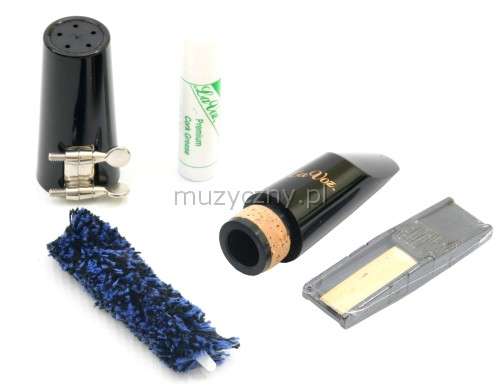
Reeds for wind instruments
See Reeds in the Muzyczny.pl store
The reeds look very similar at first glance, but are actually cut from different parts of the reed, which causes differences in their profile. Clarinet and saxophone reeds are very thin and their thickness is measured in micrometers. It happens that a slight difference in their thickness can significantly affect the differences in sound output or its shape, therefore, due to their diversity, finding the right reed is often difficult. Especially for beginner clarinet players. When choosing reeds, it is very important to pay attention to the mouthpiece you have, and mainly to its opening. The wider the opening of the mouthpiece, the more comfortable it will be to play on soft reeds. This should be given special attention.
Clarinet and saxophone reeds have different hardnesses. They are indicated by numbers from 1,5 to 5, with the degree of hardness changing every 0,5. The hardness of the reed depends on the thickness of the reed it is made of and determines the difficulty of producing the sound from the instrument. When buying reeds, you should adjust their hardness to the level of advancement of the instrumentalist. For beginners, it is recommended that the reeds are 1,5 – 2 hard. It is best for the student to try to play the reed as hard as possible, of course, according to the possibilities and experience of playing the instrument. This motivates the clarinettist to blow properly, thus shaping the respiratory system. You should remember not to make learning easier by playing on a reed that is too soft, because this way we are not able to freely produce the full sound and we do not work on a stable blowing.

The question of choosing the right tuner is a very individual matter. It depends on the bloat (the way the lips, mouth, tongue, jaw and muscles surrounding the mouth and the air path are formed) as well as preferences regarding the tone of the sound. Professional clarinet players consider the Rico and Vandoren reeds to be the best for beginners. Rico reeds are good for their ease of reproduction and precise articulation. However, as I mentioned earlier, this is a very individual matter and it often happens that these reeds do not meet the expectations regarding the sound and instrument. On the other hand, the reeds by Vandoren (I mean traditional reeds – blue) allow for comfortable playing and easy production of a sound with a satisfactory “shape”. Moreover, they last longer than other reeds, even with heavy use.
It happens that finding the right reed becomes problematic due to the fact that when buying the packaging, not everyone is ready to play right away. It often turns out that the number of reeds suitable for playing, without any work on them, rarely exceeds 5, i.e. half the package. Also in this respect, the reeds from Vandoren are much better than the rest of the companies.
Therefore, when buying a box of reeds, each one should be soaked in water and try to play a few notes on it. If the reed is suitable, play it slowly, i.e. about 15 minutes a day, so that it does not lose its value too quickly. If a reed is not suitable for playing, read the rules for working on it.

Working on a reed is an activity that requires high precision and delicacy. It involves grinding the surface of the reed called the “center” (if the reed is too hard) or cutting a thin edge called the “tip” (if the reed is too soft). To work on a reed, we most often use sandpaper with high granulation (1000, 1200) or a file, while to cut the “tip” you need a special cutter, which can be purchased in music stores. The edge can also be rubbed with sandpaper, but it requires special care not to change the style of the reed. In order to know where and with what force to wipe off a reed, you should spend a lot of time practicing this skill. The greater the experience, the more reeds we are able to improve, thus adapting them to playing. It should also be remembered that, unfortunately, not every reed can be “saved” regardless of the work on it.
Reeds should be stored with extreme care. They should be able to dry out after use, but should not be exposed to strong sunlight, radiator heat or very cold temperatures, as temperature changes can cause the reed tip to be wavy. A reed with such a “tip” unfortunately can be thrown away, because despite the existing ways of dealing with it, the reed will not have the sonic qualities that distinguished itself before this change. The reeds can be stored in a special case as well as in the “T-shirts” in which the reeds are located when purchased.
Choosing the right reed is extremely important. It determines the timbre of the sound and precise articulation, among other things. It is our “contact” with the instrument. Therefore, they should be selected with particular care and stored as safely as possible.





